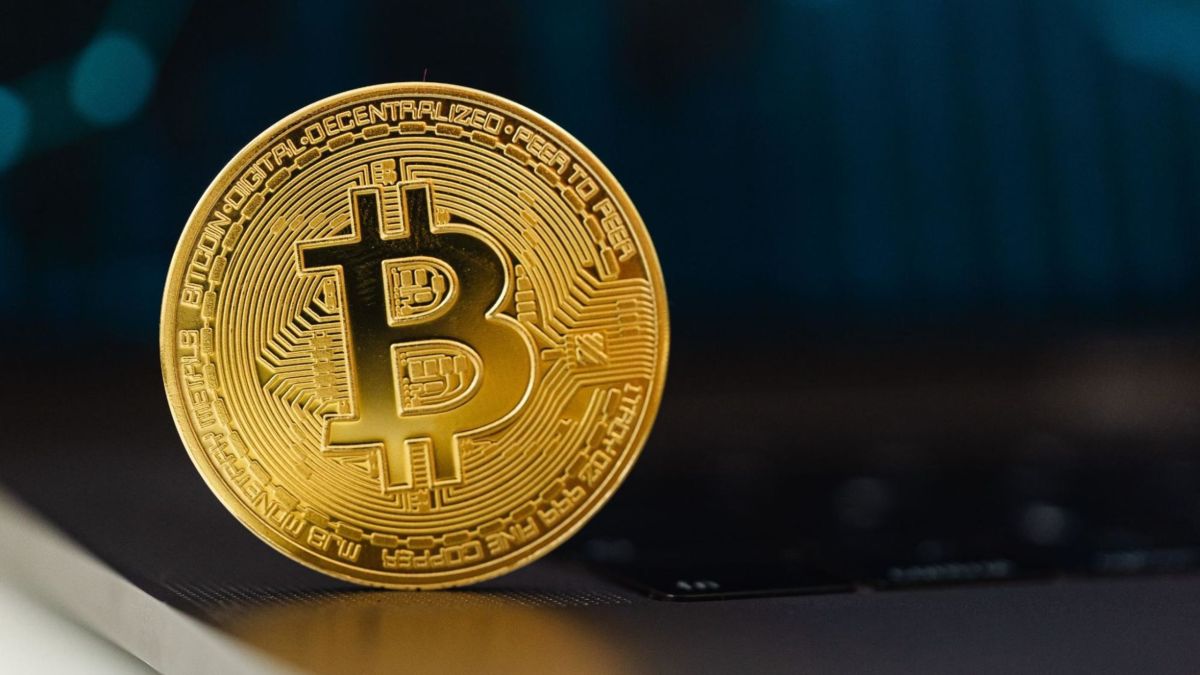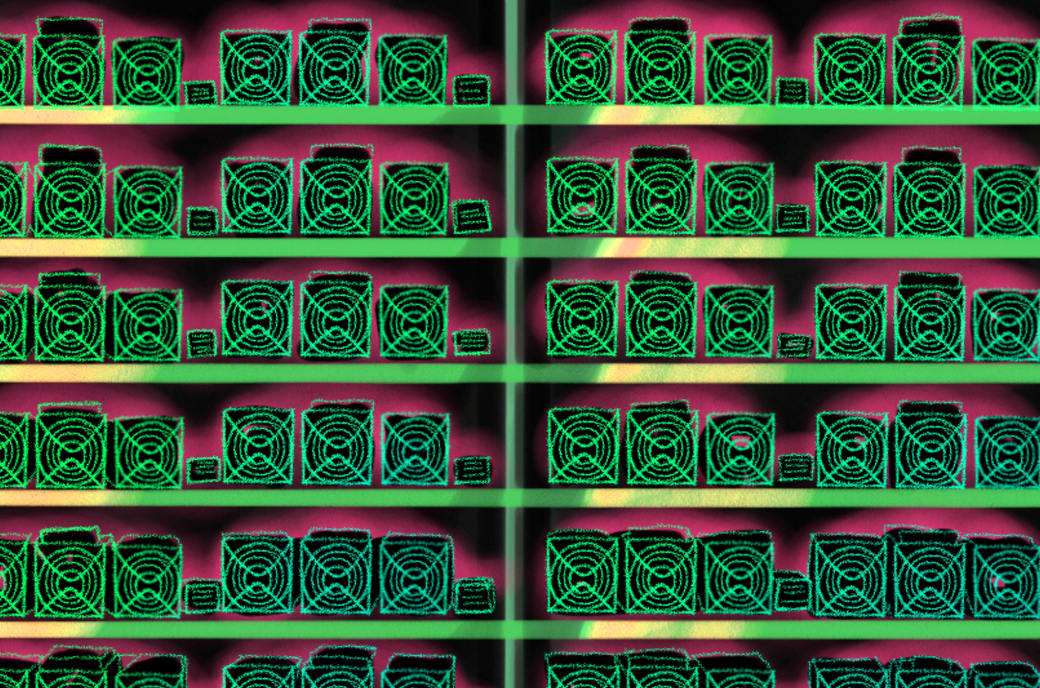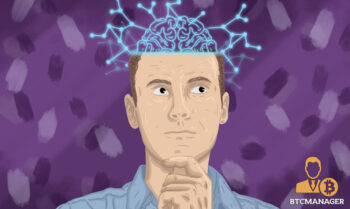2022-1-16 00:00 |
Like the revelation that the earth revolves around the sun, the discovery of a digital, sound money system in Bitcoin is a scientific revolution.
It is a rare event for humanity to experience a change in worldview. You could say that the last time such an event truly took place was at the end of the Middle Ages — with the development of the telescope and the printing press, people learned that the Earth revolved around the sun and not the other way around. These discoveries led to increasing distrust in the power of the time: the church.
With the crumbling of these old institutions, this dark period came to an end. A time of rebirth and prosperity would follow in the ensuing Golden Age, in which freedom, science and trade reigned supreme.
Today, we stand on the eve of a new revolution in the history of mankind. A scientific revolution in money: Bitcoin. The invention of absolutely scarce money is a paradigm shift and an anomaly within the realm of Keynesian economics. The technology is capable of destroying old power structures and returning power to the sovereign individual. A Digital Renaissance, resulting in the separation of money and state.
Source The Structure Of Scientific RevolutionsPhilosopher of science Thomas S. Kuhn came up with a framework in 1962 to characterize and identify scientific revolutions in his book “The Structure Of Scientific Revolutions.” Kuhn describes how science does not move linearly, but undergoes a revolution every once in a while in order to progress.
We distinguish two phases in the progress of science. The first is called “normal science,” in which new discoveries are made on the basis of the prevailing worldview (model/theory), also called a “paradigm.” In normal science, incremental steps are taken by finding “puzzle pieces” within the current framework of thinking. However, over time, observations are made that are inexplicable within the current paradigm, the so-called “anomalies.” These gradually accumulate, creating a crisis in the paradigm, and the need for a better model increases. This is the phase of revolutionary science.
This second phase is often accompanied by a fierce battle between supporters of the new theory and defenders of the old. The struggle arises because the two sides base themselves in contrasting models in which they try to explain reality. The views are incommensurable.
A winning paradigm is a model that is “better” at explaining the world. This is expressed in a higher predictable power and applicability in the development of new technology. For example, Einstein was able to predict that gravity can bend light thanks to his theory of relativity. In addition, the new knowledge would be used for applications such as GPS satellites and nuclear energy.
New paradigms are often brought forward by creative and contrary personalities who haven’t been immersed in the old system for their whole lives. As a result, they have a fresher view of the whole and naturally think more “outside of the box.” Old paradigms die hard, and often have only disappeared when literally the last adherents have died.
After a new paradigm is accepted, the process starts over again with normal science and steps can be taken in solving puzzles within the new and improved framework.
The most important lesson we can learn from Kuhn is that our current worldview has an expiration date and one day we will experience a crisis in which we have to look for a better perspective. It is the arrogance of any civilization to think that we are now at the peak of our understanding, as we can only point back to a history when people held an inferior view. But this moment will also one day become history, and will be looked back on it with astonishment.
Separation Of Church And StateA well-known paradigm shift that took place 500 years ago was the move from geocentrism to heliocentrism, i.e., the perspective shifted from the earth to the sun as the center of space. This shift was due to the invention of the telescope. This new instrument made it possible to make observations that did not correspond to the ideas of the Roman Catholic Church. The Roman Catholic Church still had a lot of power at that time and denounced everything and everyone who was undermining that power.
The Printing PressPrinting was an important catalyst in the spread of astronomical knowledge at the end of the Dark Age. Invented in 1440 by goldsmith Johannes Gutenberg, the printing press made it possible to distribute books at scale. It replaced the manuscript (handwritten documents) and significantly reduced the cost of owning a book.
The invention would change the structure of a society in which the new middle class could increase its literacy. It would lead to the Reformation and further crumbling of ecclesiastical power. For example, the distribution of printed Bibles called into question the authority of the church, as people were now able to interpret the word of God for themselves. A result was the criticizing of indulgences, because these were nowhere mentioned in the holy book of God.
HeliocentrismAnother book that came off the press and caused a stir was the book “De Revolutionibus Orbium Coelestium” (“On The Revolution Of The Heavenly Bodies”) by mathematician Nicolaus Copernicus. The book was published just before his death, because he was convinced that it would cause havoc. He wouldn’t be wrong, and a fellow astronomer from Italy would have to defend his position some decades later and feel the heat of the church.
The discovery that the sun is at the center of space was a classic paradigm shift. The geocentric model had created many anomalies over time, including the inexplicable retrograde motions of the planets from earth’s perspective. The entire model was very complex and not very elegant and left a lot of questions unanswered. Also, its predictive power was far from great. The new paradigm would bring a more elegant model, explain the retrograde movements of planets and would form a better tool for making astronomical predictions.
Copernicus’ heliocentric model would not be taken seriously until the next century due to the breakthrough in astronomical instruments: the telescope. Patented in 1608 by the Dutchman Hans Lippershey, but copied by the Italian Galileo Galilei the following year. Galileo would make all kinds of new discoveries, including that the moon is not perfectly round and the existence of the Medici stars, better known as the moons of Jupiter. The observations would be published in the pamphlet “Sidereus Nuncius” in 1610, which would be widely distributed by the printing press. Galileo also set the precedent for experimental reproducibility and encouraged other astronomers to verify his findings.
Galileo Galilei, sourceThe first criticisms and skepticism were not due for long. The observations were dismissed as lens defects at first. Verifiability was still low at that time, as there were few telescopes in circulation. But as time passed, Galileo gained more and more support from other scientists, such as Johannes Kepler who confirmed his observations.
Before the publication of the pamphlet, the church had only accepted the heliocentric model as mathematical and hypothetical. However, the edition of “Sidereus Nuncius” presented the heliocentric model as factual and not hypothetical. With this, Galileo put himself in direct opposition to the written word of God and therefore in conflict with the church. This would lead to a Roman Inquisition in 1616 in which the astronomer had to defend himself against the holy institute. As a result, Galileo was censored and banned from discussing heliocentrism. Copernicus’ book, “De Revolutionibus Orbium Coelestium,” would also be banned and the model would be labeled as foolish and absurd.
The astronomer would stay far away from this controversy for a long time. He had sensed what Copernicus feared: reprisals from the Pope. But in 1632, he dared it again when Pope Urban VIII took office, as he was friends with this ex-cardinal. Galilei published “Dialogo Sopra I Due Massimi Sistemi Del Mondo,” in defense of the heliocentric model. Despite his friendship with the Pope, in 1633 he was accused of reeking of heresy and sentenced to lifelong house arrest and his book was banned. Galileo seems to have uttered the legendary words after his conviction: “Eppur si muove” (“and yet she moves”). The church could demand he recant his words, but in reality, the earth would continue to revolve around the sun and not the other way around.
At the time, the invention of the printing press and the telescope were innovations that changed society and the view on the world. The decentralization of knowledge made it increasingly difficult for the church to maintain its credibility. It would ultimately mean the separation of church and state where power would shift to the individual. Countries that were open to this kind of knowledge and ideas would gain an edge over competitors who still cling to the dogmas of the church. Protestant countries, where this knowledge found fertile soil, would reap the benefits.
Bitcoin: A Telescope On The Monetary SystemImportant technologies can bring about enormous shifts in society. In addition to the telescope and printing press, gunpowder, electricity, the car and the internet have completely changed the world. But the printing press combined with the discovery of heliocentrism made a change in the minds of the people — an abandonment from dogmatic thinking toward more scientific thinking and practice through testing and verifying.
SourceLooking at this history, one may wonder what currently is the paradigm and what are we falsely believing in. What is that thing that people are going to look back on 100 years from now and say, “My goodness, what was wrong with those people that they didn’t see that?” The separation of church and state was accomplished through the press and the telescope. The division between money and state will be settled in this century. The catalytic technologies for this are the digital printing press (the internet) and this discovery of digital gold, also known as bitcoin.
Internet: A Digital Printing PressWe are in an age when information is spreading on an unprecedented scale and when individuals around the world can communicate with each other virtually for free at the speed of light. Websites like Wikipedia, YouTube and Twitter allow us to reach large groups of people with a minimal amount of energy. Knowledge and ideas are therefore spreading faster than ever. The digital printing press is magnitudes better than its predecessor.
The internet has already changed our society enormously in its short existence. Mobile banking, video calling and remote working are all things that were not possible before. In principle, remote work makes it possible to work location-independently. Digital nomads take advantage of this by traveling to cheaper and warmer places where they get more bang for their money and still get their work done.
Bitcoin: A New perspective In MoneyDecades ago, it was predicted that the internet would change today’s society. In the “Sovereign Individual,” authors James Dale Davidson and William Rees-Mogg argue that the microchip will gradually undermine the power of the state, as people are less and less tied to their physical location. They also predicted the invention of uncontrollable “cyber cash,” through which individuals can trade anonymously with anyone in the world, using a non-sovereign money outside of the power of the state. In addition, these sovereign individuals are no longer dependent on government money, which loses value every year due to inflation. As inflation is an important way to pay for rising government deficits, governments will slowly drive their citizens towards the refuge of cyber cash.
That the writers could predict cyber cash was not that remarkable, as history has shown that virtually all fiat (unsecured government money) money systems do not last forever and soft money always declines in purchasing power. Aslo, digital money had been worked on for more than 40 years before the breakthrough came in 2009 when Bitcoin was launched by Satoshi Nakamoto.
Satoshi’s invention was born of the financial crisis and was intended to solve the problems of fiat money, including trust, inflation and privacy. Fiat money is an unsecured system and therefore not scarce, as governments can always print more, eroding the currency’s value resulting in a loss of its savings function. In addition, cash is increasingly disappearing, making it increasingly difficult to do transactions in anonymity.
Bitcoin is a decentralized type of money with a money supply that can never exceed 21 million. The decentralization ensures that no one has power over the currency and therefore cannot change the rules. By also introducing a hard limit on the total amount of coins, the ultimate inflation will be 0%. As a result, bitcoin can never devalue and will only increase in value with increasing users (in fiat terms).
Don’t Trust. Verify!Bitcoin, by design, brings a new perspective on our current money system. One can say that Bitcoin is the telescope through which we can see reality better, just as Galileo got a better picture of the sky with his instrument. He saw geocentricity was not real and could not resist speaking the truth that held an incorrect view. Other scientists verified what Galileo saw by seeing for themselves through their own telescopes.
In Bitcoin we say, “Don’t trust. Verify!” Anyone can run the software on their computer and confirm that the digital scarcity is true. You don’t have to believe in it, you can see it for yourself. It’s transparent money. This transparency creates a stark contrast with the legacy system. Why is there no hard limit to the amount of paper money?
The heliocentric model, where everything revolves around the sun in beautiful ellipses, is perfect contrast to the complex geocentric model. And this is as perfect as Bitcoin is compared to the opaque fiat system. When, in the past, the church dictated the paradigm instead of accepting how it really is in nature, governments and central banks now dictate how money and the economy work. They hate Bitcoin because digital gold follows the laws of nature.
Bitcoin exposes the biggest anomaly of the fiat system, namely inflation and ever-rising prices. While advancing technology should only lower prices, we live in a world where all prices are going up. This is a direct result of the increase in money supply. It’s depreciating our savings, to the benefit of the authorities closest to the money printer.
The Paradigm Shift Of The 21st CenturyThe state was once functional for its citizens, but the credibility of this institution is diminishing, partly due to the depreciation of the money it spends. Bitcoin is a new paradigm, in which it becomes a tool for the individual and not the state. It enables the user to save again and to safely store their work in a money that the government cannot dilute.
Most people have never really thought about what money actually is and how it works. They have been immersed in the fiat system all their lives, making it difficult to understand what a hard currency would do if you saved in it. But, the Galileo of the day, Satoshi Nakamoto, has now made this hard coin for us.
Many will initially view Bitcoin as a flaw in the lens, but a few have already embraced the new paradigm and are convinced that bitcoin is the best money ever developed. They experience how well-designed money increases in value, which increases their purchasing power. Others will first have to experience a crisis moment before they see the usefulness of Bitcoin.
Just as the church resisted heliocentrism, so is the state resisting Bitcoin. However, smart individuals and countries will adopt Bitcoin and reap the benefits, and can speak up and say “eppur si muove.”
Because denying Bitcoin is the same as believing that the Earth is still the center of the heavens. Perhaps, in 20 years, we can look back on this time and see that we have awakened from the monetary Dark Ages and can now build the world again under a sound money standard, the Bitcoin standard.
This is a guest post by Bitcoin Graffiti. Opinions expressed are entirely their own and do not necessarily reflect those of BTC Inc or Bitcoin Magazine.
origin »Bitcoin (BTC) íà Currencies.ru
|
|





















